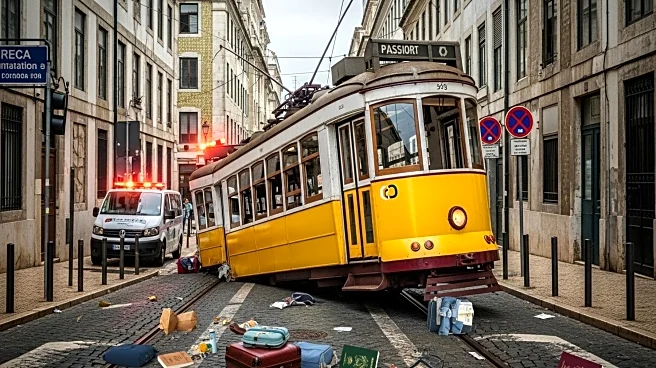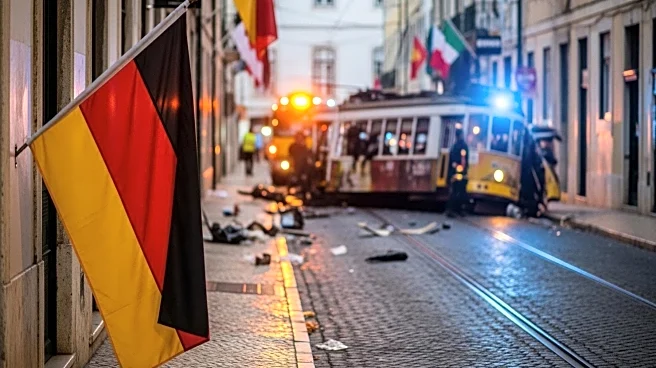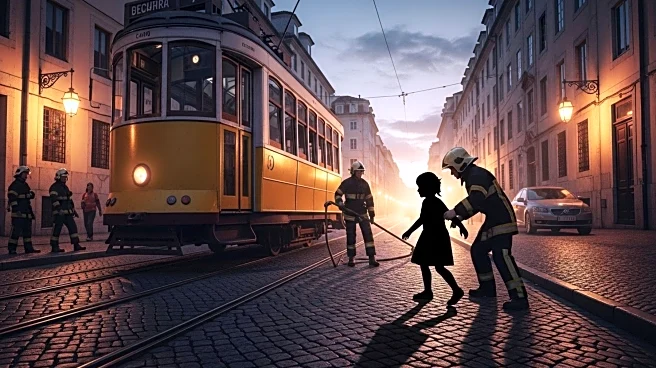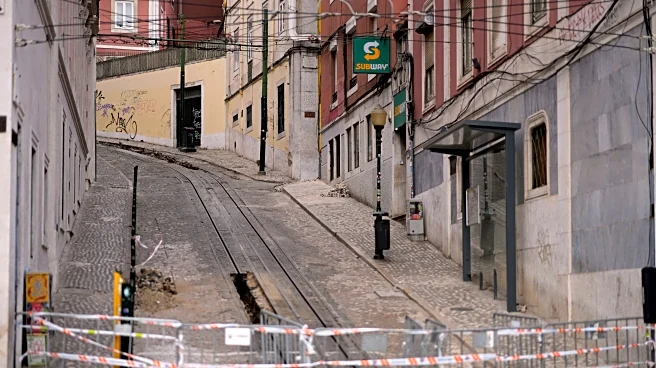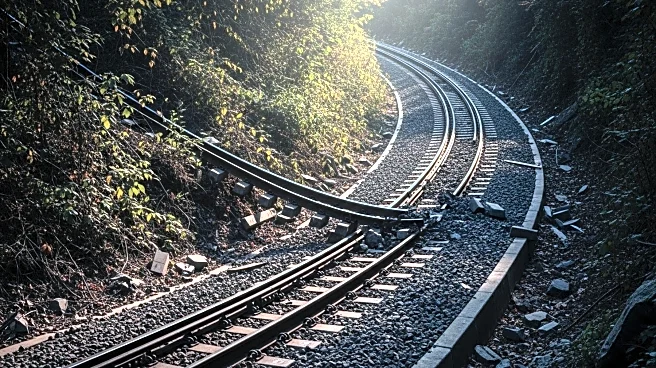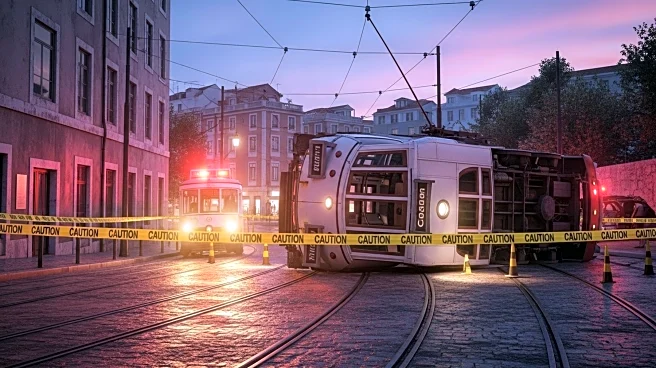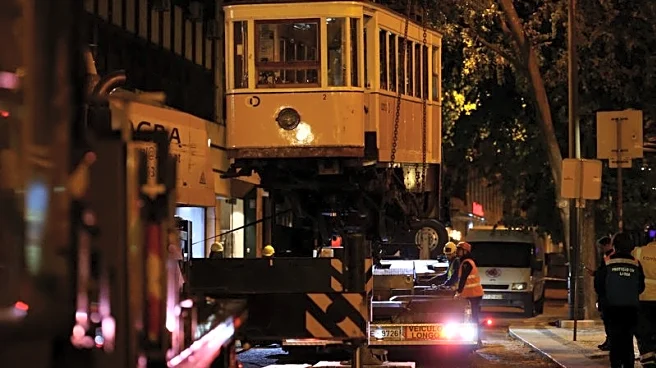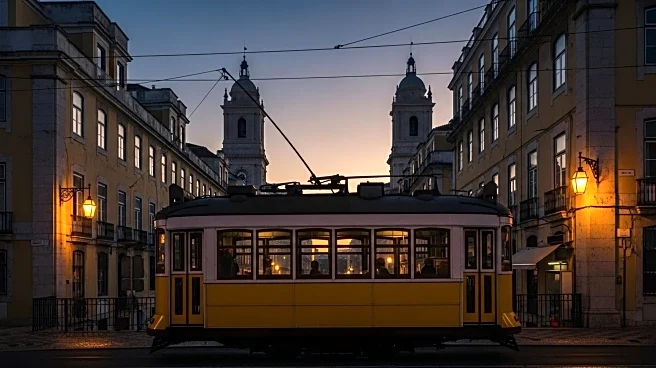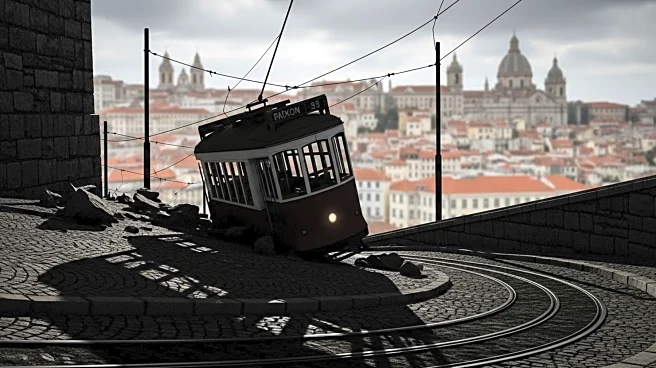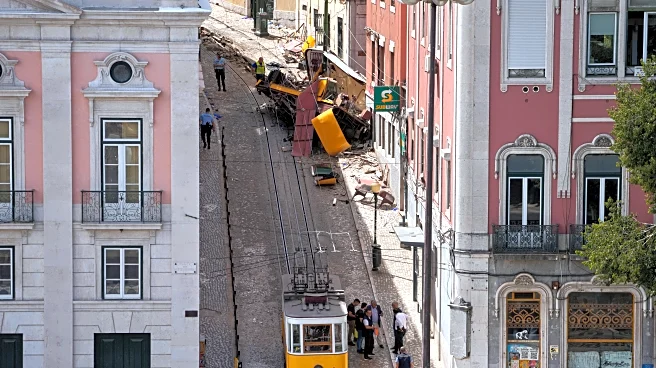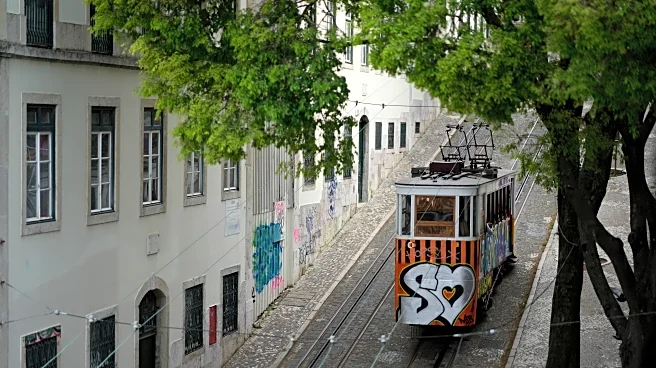What's Happening?
A tragic streetcar crash in Lisbon has resulted in the deaths of 16 individuals, including 11 foreigners, and injuries to over 20 people. Among the deceased are citizens from various countries, including the United States, Britain, Canada, South Korea, and others. The crash involved the Elevador da Glória, a national monument streetcar, which derailed and crashed into a building. Investigations are underway by the Portuguese police and the Office for Air and Rail Accident Investigations to determine the cause of the accident. The streetcar had undergone maintenance last year and was inspected daily, with the last inspection occurring nine hours before the crash.
Why It's Important?
The crash has significant implications for international relations and tourism in Portugal, as many of the victims were foreign nationals. It raises concerns about the safety of public transportation systems, particularly those that are historical and heavily used by tourists. The incident has prompted a national day of mourning in Portugal and has drawn attention to the need for rigorous safety checks and maintenance of public transport vehicles. The tragedy also highlights the potential impact on Lisbon's tourism industry, as tourists may now be wary of using similar transportation methods.
What's Next?
Authorities are expected to release a preliminary technical report soon, with a broader police report anticipated within 45 days. The company operating the streetcar, Carris, has initiated its own investigation. Lisbon's City Council has suspended operations of similar streetcars pending immediate inspections. The findings from these investigations could lead to changes in safety protocols and maintenance procedures for public transportation in Lisbon and potentially other cities with similar systems.
Beyond the Headlines
The crash has sparked discussions about the balance between preserving historical transportation systems and ensuring modern safety standards. It may lead to debates on the ethical responsibilities of maintaining such systems and the cultural significance of historical monuments versus public safety.
